Small, high performing and cheap, what’s not to love about bifilar wound common mode chokes (CMC). This article will walk through the process of building one (or two).
Why bifilar rather than coax wound?
Chokes really should be wound nice and tight against the toroid core and given that coax has a minimum bend radius (25 mm for RG58), to do it right I’d want to use something with a tight bending radius, which only really leaves RG-174 and RG-316, none of which I had on hand. So the simple answer is that I just used what I had lying about. While my testing has shown a slightly wider bandwidth of bifilar over coax wound CMCs, it’s not enough to make me choose one over the other.
Supplies:
- 500 mm CAT5/6 cable.
- Mix 43 toroid – Fair-Rite 5943002701.
- Zip-ties.
The process:
For the windings, I use CAT 5/6 cable. The wire pairs are HDPE coated with a characteristic impedance of 100 Ω.
- Cut a 500 mm length of CAT5/6 cable.
- Score the length with a sharp knife
- Pull out the pairs and the outer should tear easily along the score line.
- Zip tie one end of the wire, and wind ten turns through the toroid (pass ten times through the centre). I have made CMCs with more turns, but it offers limited benefit whilst making it very tight fitting it all on.
- Zip-tie the other end.
At this point you will have a bifilar winding with a characteristic impedance of 100 Ω, not quite what we need. By adding a second winding, which we can later wire up in parallel, we can achieve that magic characteristic impedance of 50 Ω.
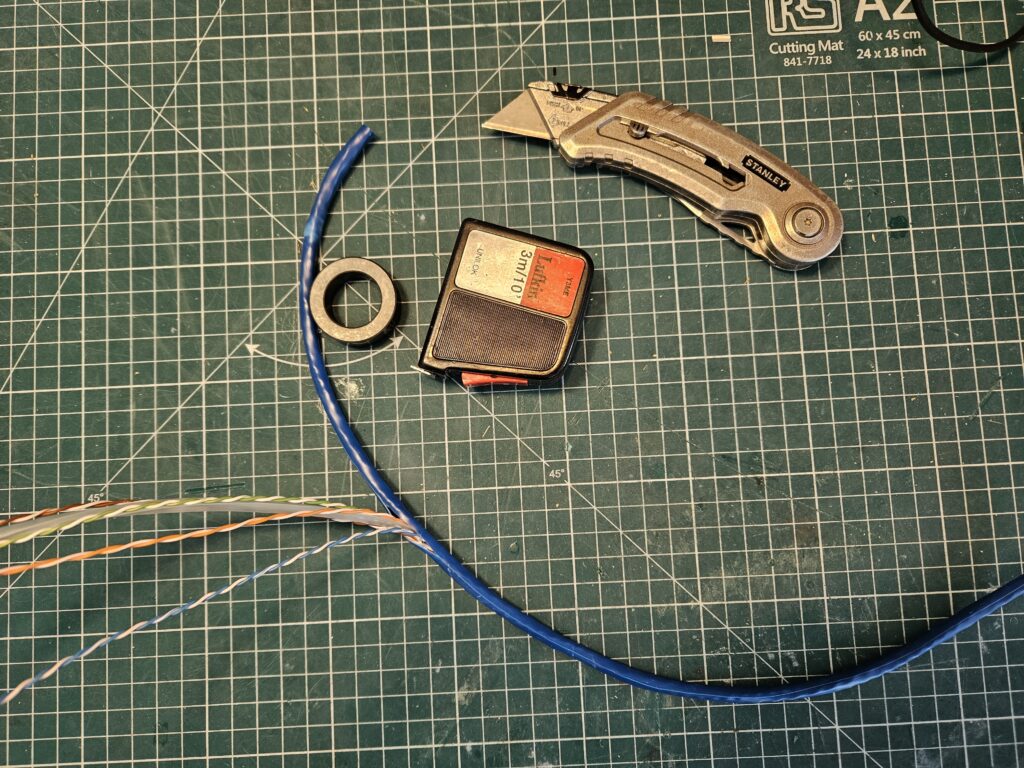
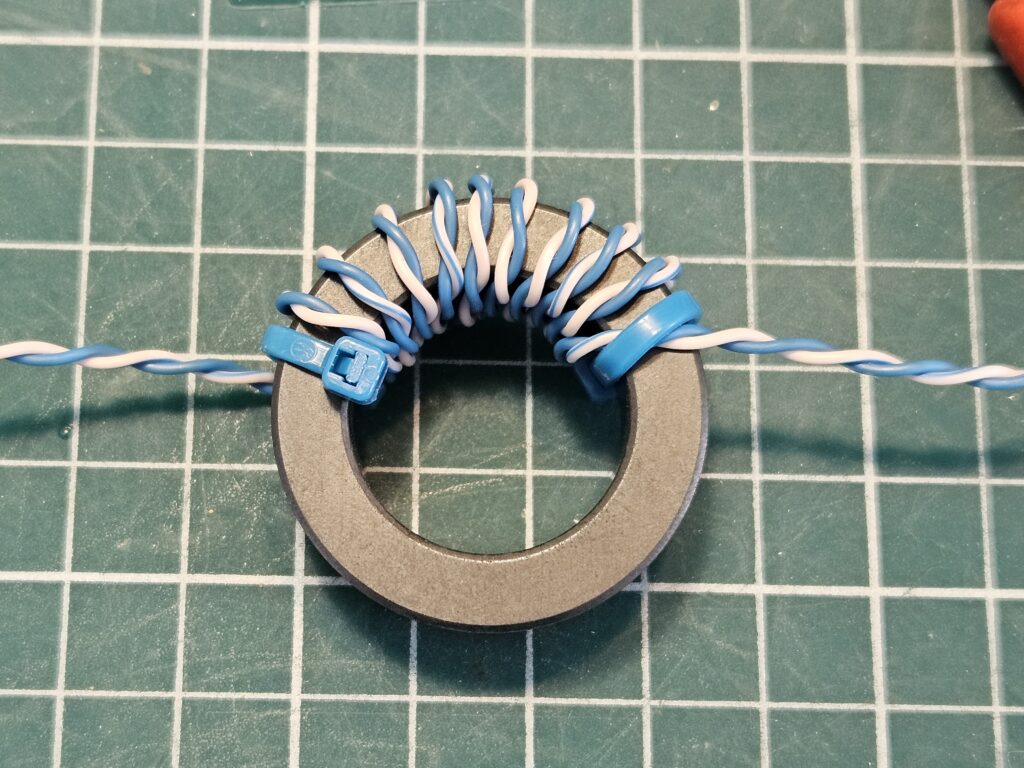
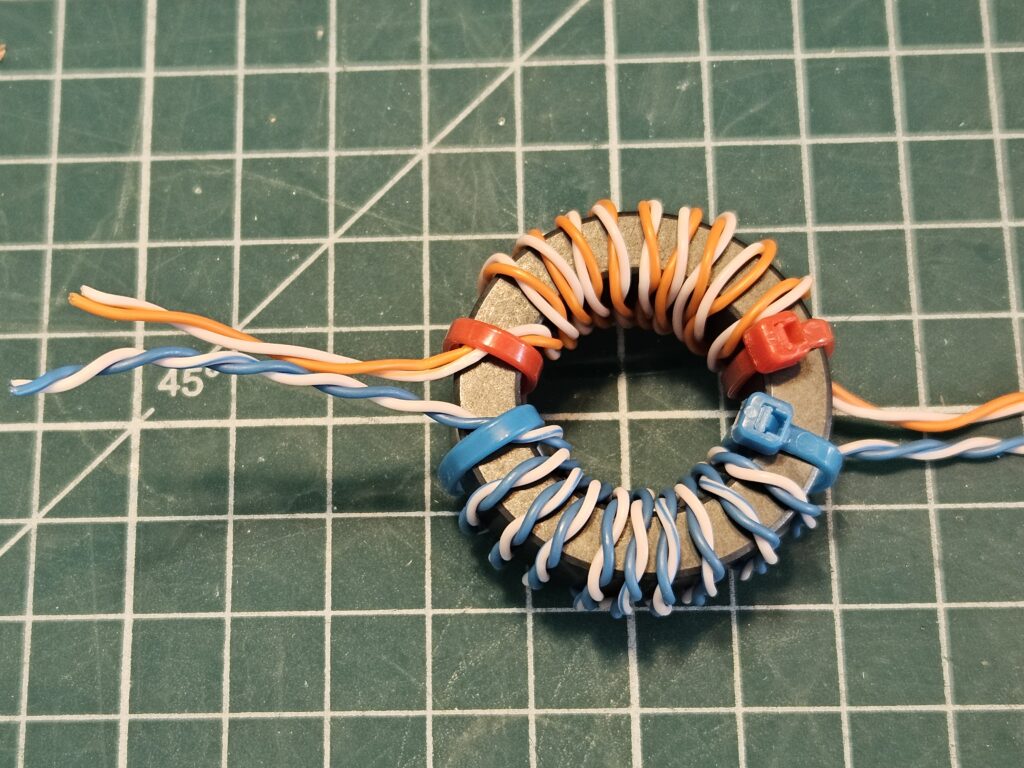
You will have observed that CAT cable has four pairs, and we’ve just used two. My experience has shown that storing the other two pairs for later use is but folly, as they will have long disappeared when the day of need dawns. As such, while you’re at it, just wind another choke.
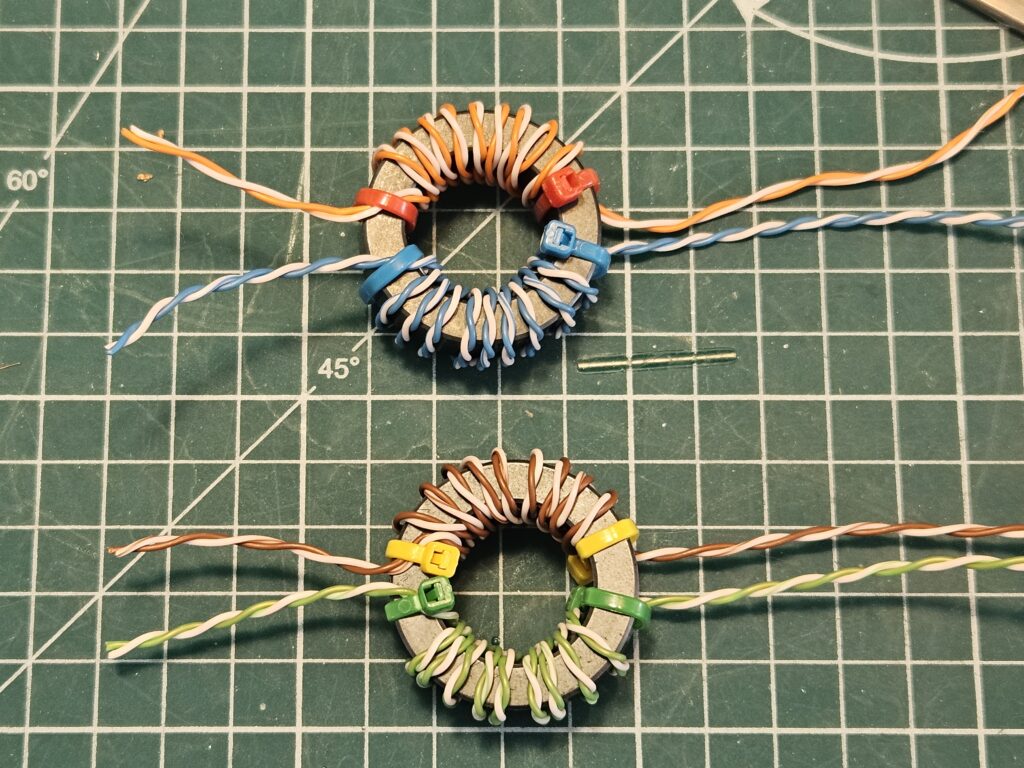
With the chokes wound, the next step is to verify their insertion loss and common mode attenuation. I’ve already written an article on effectively measuring CMC performance.
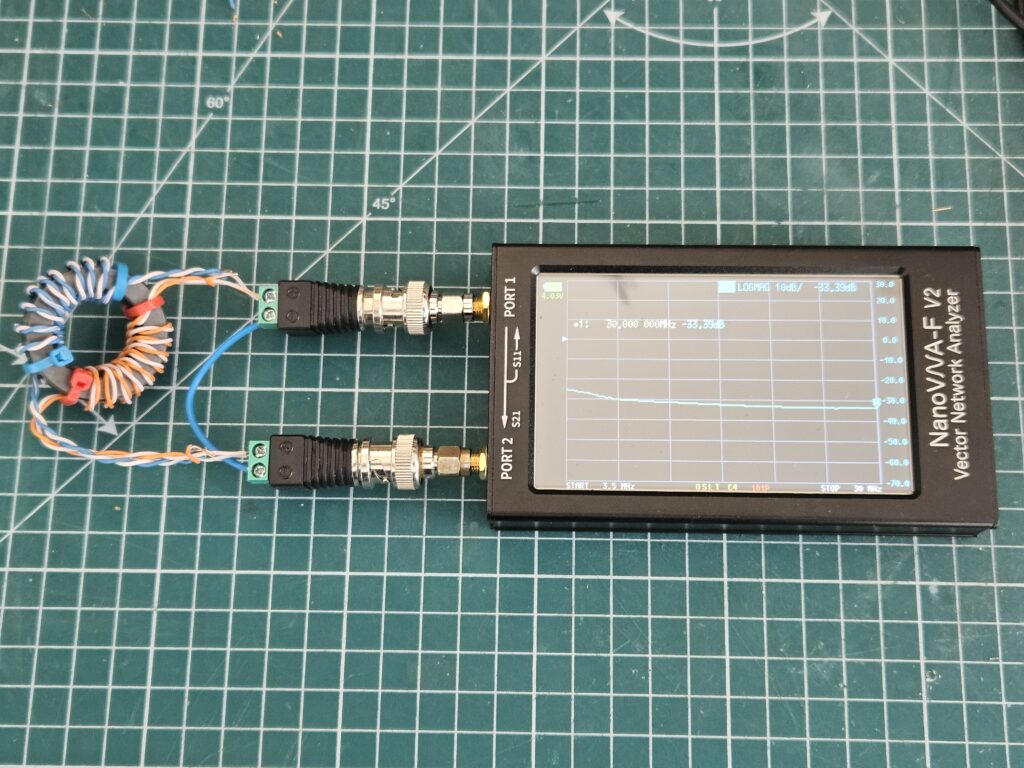
All that’s needed is to connect the ends to an RF connector or some coax and you’re done. To ensure I get my parallel configuration correct, I always pair the coloured wires with the centre conductor, and the white to the shield.
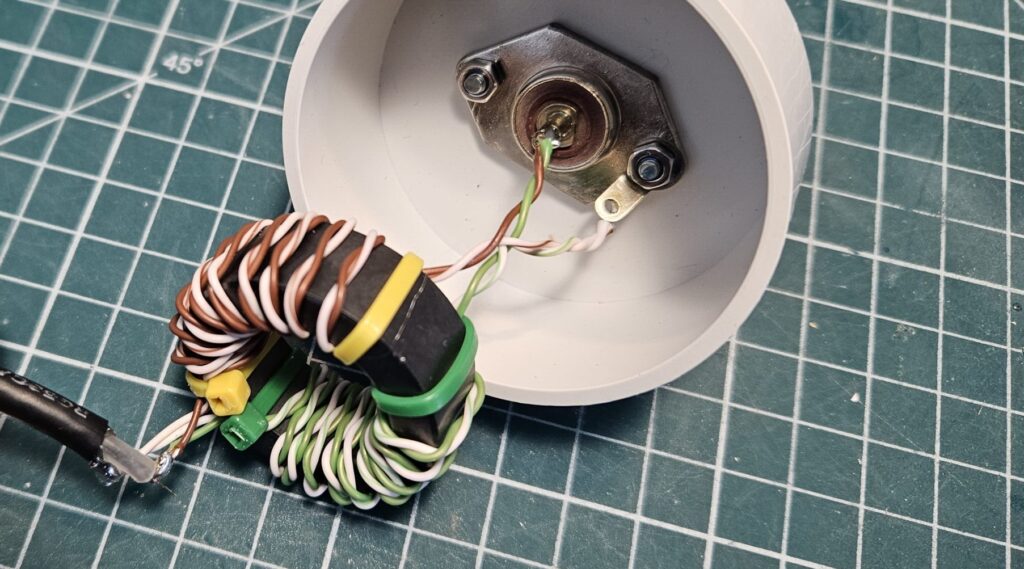
And that’s it. Just remember never to house your CMC in a metal enclosure unless you isolate at least one of the sockets, otherwise the common mode current will simply flow over the outside of your housing, bypassing the CMC entirely.
Lance
September 2025
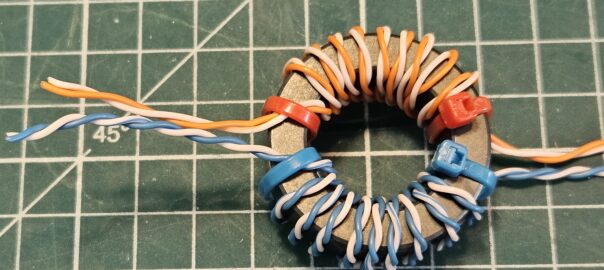
One thought on “Building bifilar common mode chokes.”